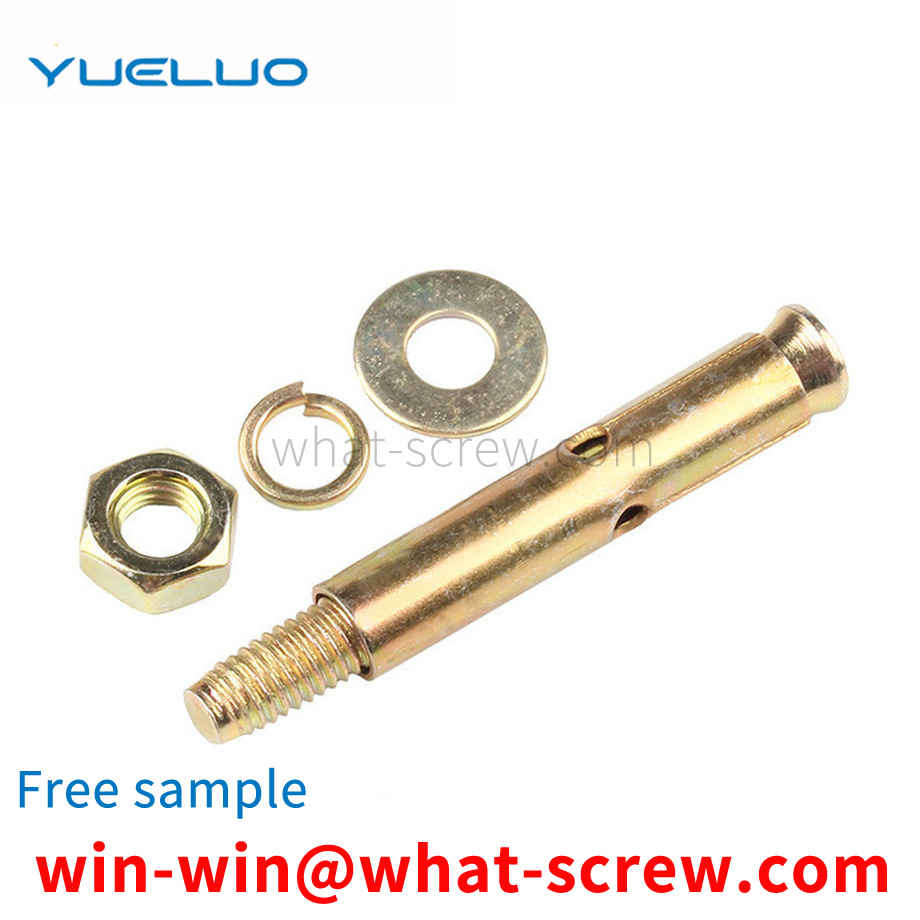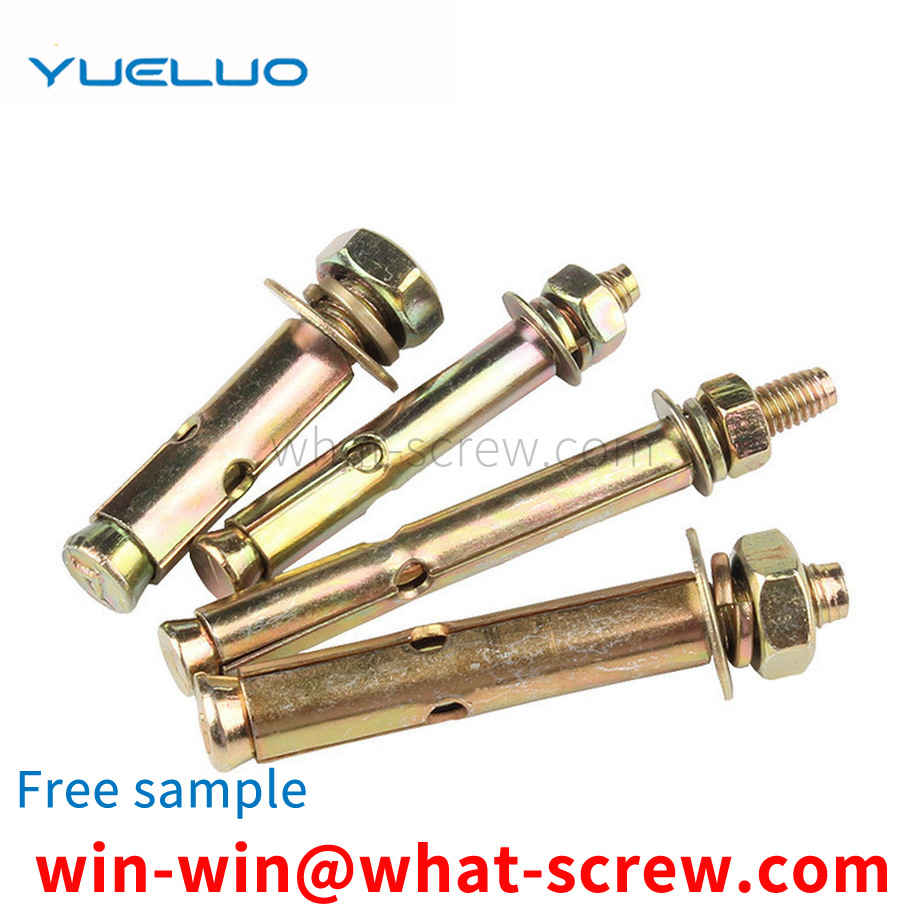The screw is usually installed in the threaded hole of the part, and its main function is to fix the relative position between the two parts. It is widely used in various industries. A traditional screw generally includes a screw rod and a head located at one end of the screw rod. During installation, the screw rod is connected with a threaded hole, and the head is located outside the screw hole and abuts on the edge of the screw hole.
From the perspective of use: The bolted connection of the main components of the building structure is generally connected by high-strength bolts. Ordinary bolts can be reused, but high-strength bolts cannot be reused. High-strength bolts are generally used for permanent connections. The high-strength bolts are prestressed bolts. The friction type uses a torque wrench to apply the specified prestress, and the pressure type screw off the torx head. Ordinary bolts have poor shear performance and can be used in secondary structural parts. Ordinary bolts just need to be tightened. Ordinary bolts are generally 4.4, 4.8, 5.6 and 8.8. High-strength bolts are generally 8.8 and 10.9, of which 10.9 is mostly. Level 8.8 is the same level as 8.8S. The mechanical properties and calculation methods of ordinary bolts and high-strength bolts are different. The stress of high-strength bolts is firstly by applying a pre-tension force P inside, and then generating frictional resistance on the contact surface between the connected parts to bear the external load, while ordinary bolts directly bear the external load.
As the preferred embodiment of the above-mentioned embodiment, the motor 41 is provided with a thruster 46 that moves the cutting wheel 42 toward the conveying device 3. When the screw needs to be slotted, the thruster 46 generates a thrust toward the screw, and the motor 41 generates a thrust in the direction of the screw. Under the action, the groove is moved along the track 47 toward the screw. The other end of the motor 41 is provided with a bearing 45, and the output end of the motor is provided with a special-shaped wheel 44. The special-shaped wheel 44 is geared to the bearing 45. The wheel 42 is close to or away from the conveying device 3. When the grooving is completed, the special-shaped wheel 44 rotates and drives the bearing 45 to generate the opposite force from the above-mentioned thrust, so that the motor 41 moves back to the initial position along the track 48.
In order to meet the requirements of anti-loosening bolts of parts with small surface hardness such as plastic parts, Yueluo provides a spring washer and the installation structure of the spring washer, which can effectively reduce the damage of the spring washer to the surface of the parts. And meet the anti-loosening effect of the spring washer. The technical solution provided by Yueluo is a spring washer, which includes a washer body with at least two raised claws on the washer body
Process equipment for aircraft production (hereinafter referred to as tooling) is directly used for part forming and component assembly. In order to satisfy the loading and unloading of aircraft parts and components during the use of the tooling, the tooling generally adopts a structural form that is easy to disassemble as a whole. In the field of aircraft process equipment manufacturing, positioning pins are usually used to connect and position the detachable parts of the tooling. At present, this kind of locating pin is divided into two types: direct pull-out locating pin and tie-suspended locating pin.
We have many years of experience in the production and sales of screws, nuts, flat washers, etc. The main products are: ingot casting nuts 0, iron dome head rivets, combination sets, hexagon socket bottom holes 7.2 outer diameter and other products, we can provide you with suitable products for you fastener solutions.



















 Service Hotline
Service Hotline




